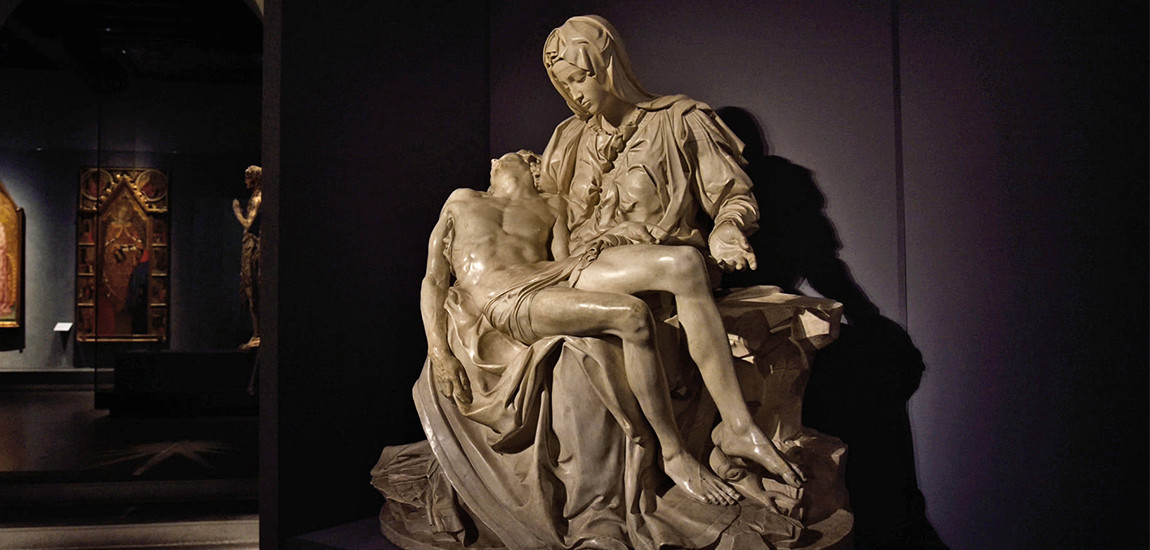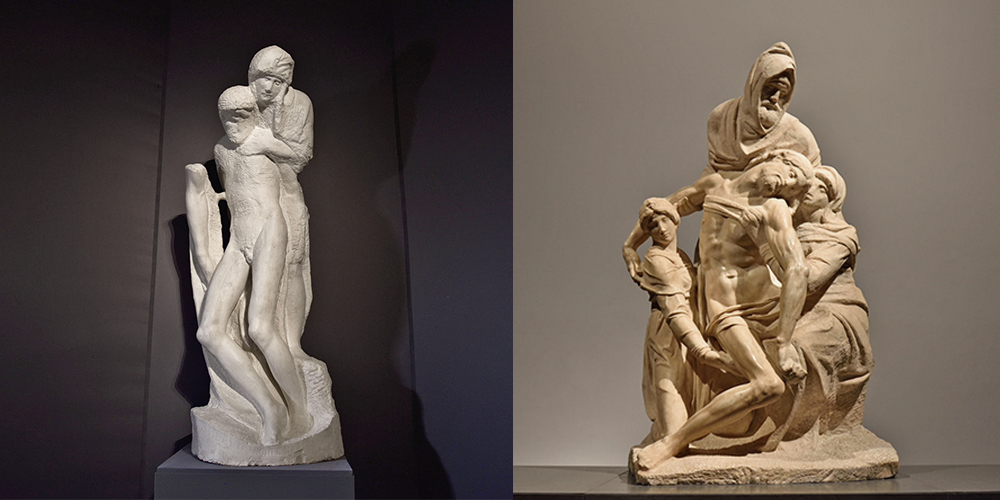
The Three Pietàs of Michelangelo side by side
When people talk about Michelangelo's Pietà, they usually mean the Pietà di San Pietro, or Vatican
Pietà, one of his most renoknown works, but this is not the only sculptural
group of this type that he ever made. In fact, he made three, and now for the
first time they are brought together in a single highly anticipated exhibition
at the Museo dell'Opera del Duomo di Firenze.
“The Three Pietàs of Michelangelo: No
one thinks of how much blood it costs” is
the title of the exhibition that compares for the first time the three Pietàs of Michelangelo Buonarroti: the
original Pietà Bandini, recently restored, from the Museo dell'Opera del
Duomo Firenze, together with the casts of the Pietà di San Pietro and
the Pietà
Rondanini of the Vatican Museums.
Until August 1st, visitors of the museum will be able to see these works side
by side in the room of Michelangelo's Tribune and appreciate the stylistic evolution
of the great artist, through works spanning fifty years of his career.
Pietà di San Pietro (1498-1499)
The Vatican Pietà was
sculpted by Michelangelo when he was in his early twenties, yet this work probably
remains the true masterpiece of the three, surely the most famous. The
sculptural group was commissioned to the young Buonarroti by Cardinal Jean
Bilhèers de Lagraulas, and as always the case in the iconography of the pietà, it represents the Virgin Mary
mourning her dead son. She keeps him on her lap as if he was still a child, her
expression plagued by pain yet sweet and now resigned, is a vision of rare
beauty. She is a very beautiful and young Maria, too young, a fact that did not
escape the eyes of the critics of the time.
Curiously enough, it is the only
sculpture that Michelangelo ever signed. A sash on the Virgin's chest
reads: MICHAEL.A [N] GELVS BONAROTVS
FLORENT [INVS] FACIEBAT ("The Florentine Michelangelo Buonarroti did
it").
According to Giorgio Vasari it was added by an enraged Michelangelo after he
had heard that someone had attributed this work to another artist. It also
seems that he immediately regretted this alteration, and he swore he would
never agin sign another work. So he did.

On the left, Pietà Rondanini (1552-1553). On the right, Pietà Bandini (1475-1555).
Pietà Bandini (1547-1555)
Michelangelo left
Florence in 1534 and moved to Rome. Here, in 1547, he began to work on the
block of marble that was supposed to
become the sculptural group for his own funerary monument for the Santa
Croce Church in Florence, but the work was completed by his principal assistant,
Tiberio Calgani and never saw the interior of the Florentine church.
Instead it was sold to Francesco Bandini in 1561, in whose villa in
Montecavallo remained until 1674, when Cosimo III de' Medici purchased it to
place it in the basement of San Lorenzo. In 1722 the Florentine Pietà was
transferred to Santa Maria del Fiore and then definitively transferred to the
Museo dell'Opera del Duomo in 1981. The beautiful sculptural group depicts
Jesus taken down from the cross, supported by the Virgin Mary, Mary Magdalene
and an elderly Nicodemus, who resembles Michelangelo himself.
Pietà Rondanini (1552-1553)
Michelangelo is said to have worked on this sculpture until the last days
of his life. The work seems to be the result of the artist's long reflection on
faith. Close to his own death, Michelangelo meditated in particular on the
Passion of Christ.
It represents Jesus and Mary, the latter struggling to support her son's body
and both figures appear to be stretching upwards as if ready for the
Assumption.
Michelangelo, already in his eighties, once again gave proof of his genius,
creating an absolutely innovative
vertical composition. The work, which remained unfinished, still manages to
show the artist's intention and the beauty of the figures he had imagined.



